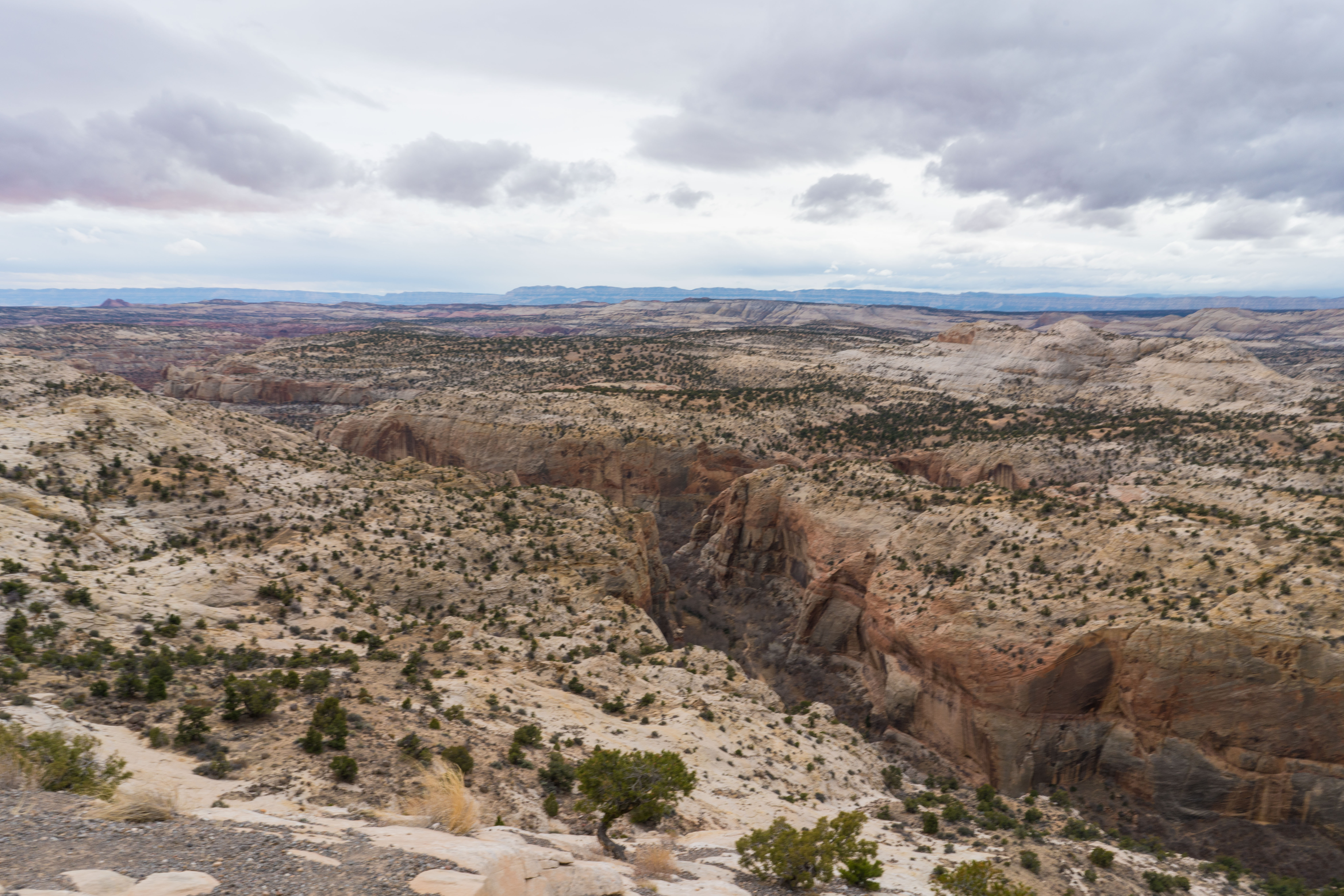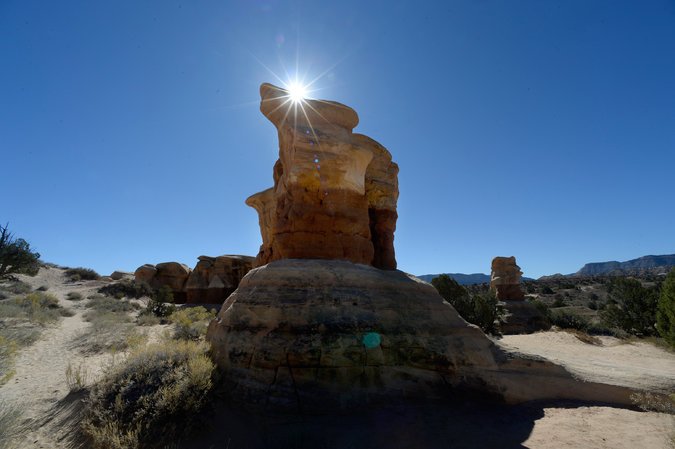Tales From the Front: A Field Trip to the Utah Monuments
Personal Reflections on the Raging Debate Over Trump’s Utah Monument Reductions

One of most highly visible disputes arising out of the Trump Administration’s multifaceted efforts to roll back and nullify the natural resources policies of previous administrations is the decision by President Trump and Secretary of the Interior Zinke to substantially reduce two national monuments in Utah created by former President Obama under the Antiquities Act.
President Trump’s December 4, 2017 Proclamation reduced the Grant Staircase-Escalante National Monument by roughly half from the 1.9 million acres established by President Obama. Equally significant, that reduction segmented the previously-continuous monument into three smaller, non-contiguous components: the Grand Staircase, Kaiparowits and Escalante Canyons units. Trump’s reduction of Bears Ears–fully 85% of its original configuration–was even more pronounced, leaving protected only two relatively small, non-contiguous remnants.
As my Legal Planet colleagues have previously reported, President Trump’s December 2017 Proclamation was immediately met with five separate lawsuits challenging the legality of Trump’s action. The lead lawsuit was filed by several Utah-based Native American tribes whose decades-long advocacy was instrumental in persuading the Obama Administration to create the monuments in the first place.
Time will tell whether these legal challenges to the Trump Administration’s action to radically shrink the Utah monuments will prove successful. But this post is not intended to revisit the legal arguments pro and con.
Instead, I wish to share some personal reflections on the character and qualities of the monuments themselves. I recently had the opportunity to tour both Grand Staircase-Escalante and Bears Ears National Monuments. (I use the Obama Administration’s terminology inasmuch as I visited both Monuments in their original configuration.) Both are spectacular in their topographic, geologic and scenic splendor, as the attached photographs from my visit indicate. For example, the Valley of the Gods portion of Bears Ears (which was eliminated from the Monument by virtue of the Trump Proclamation) is striking in its own right. But that site also overlooks and is a most scenic gateway to Monument Valley–a well-known Navajo tribal park that straddles the Utah-Arizona border and is similarly stunning.

Additionally, Bears Ears and Grand Staircase-Escalante contain unique scientific and cultural resources. I had the opportunity to view multiple Native American petroglyphs located within both monuments. And, ironically, the ink on Trump’s December 2017 Proclamation was barely dry when scientists reported the discovery of one of the world’s richest troves of Triassic-period fossils in a portion of Bears Ears that lost its protected status due to Trump’s action.
As I toured both Utah monuments, two other, related thoughts resonated with me. The first was the fact that Native American tribal leaders had worked so long and hard to secure monument status for Bears Ears and Grand Staircase-Escalante–principally because for centuries the tribes have considered these sites to be of enormous cultural and religious significance. Having finally convinced the federal government to protect them through President Obama’s designation of them under the Antiquities Act, it must have been a bitter disappointment indeed for the tribes to see the Trump Administration so quickly reverse that designation.
Second, despite media reports that the decision to shrink the Utah monuments was predicated in large part on the desire of the Trump Administration and industry to open the area to oil and gas development, my week-long visit to southern Utah provided very little exposure to extractive oil and gas/hard rock mineral development in the region. To the contrary, my trek reinforced for me the fact that southern Utah–like much of the American West–is steadily evolving from an extractive industry-based economy to one that depends largely on tourism. Indeed, Utah communities like Moab and St. George owe their economic livelihood primarily to their status as gateways to national parks and monuments, state parks, etc. That’s a far more sustainable economic model than one predicated on coal, oil and gas development.
I’m most grateful for the up-close-and-personal opportunity to tour Bears Ears and Grand Staircase-Escalante National Monuments in all their pre-Trump glory. For me, that’s transformed a somewhat abstract (if vitally important) intellectual/legal discussion into one that now resonates with me in a most personal and profound way.
I strongly recommend the experience.

Reader Comments
One Reply to “Tales From the Front: A Field Trip to the Utah Monuments”
Comments are closed.







“despite media reports that the decision to shrink the Utah monuments was predicated in large part on the desire of the Trump Administration and industry to open the area to oil and gas development, my week-long visit to southern Utah provided very little exposure to extractive oil and gas/hard rock mineral development in the region.”
I recently spent at week in Brooklyn and saw a “For Sale – $1” sign. I strongly recommend that you buy it.